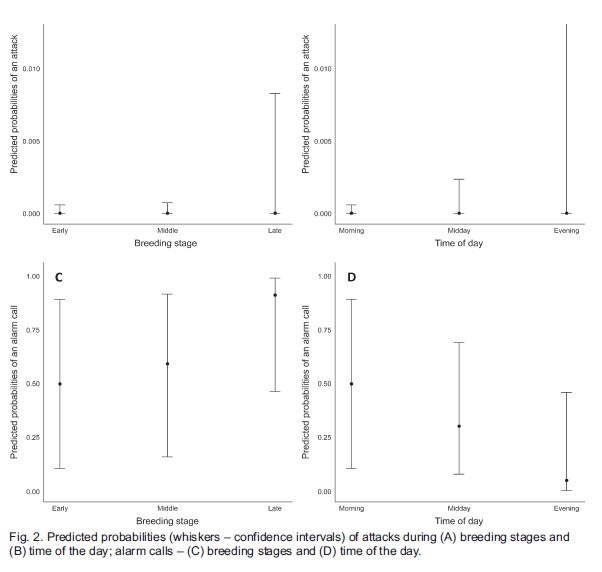Animal Biodiversity, Structure and Ecology of Populations
Animals are the most diverse group of organisms with enormous importance to ecosystems and humans. Hundreds of new species are described every year, however, many more are eradicated by human activity. Therefore, it is important to reveal the basic principles of their systematic and ecological evolution based on certain model animal groups. This includes research on Lithuanian fauna, with a particular concern about the ecology of rare and endangered, also alien and invasive species of animals and animals of medical or veterinary significance, changes in their abundance and distribution. The principal aims include: 1) the research on animal taxonomy and ecology based on the studies of particular animal groups; 2) the studying of the ecology of rare animal species, their abundance and distribution models in Lithuania and especially in the protected areas; 3) the carrying out of research on the biology and ecology of invasive organisms or animals with medical or veterinary significance.
The ongoing research of our team concerns insects (Diptera: Tipulomorpha; Bibionomorpha, Coleoptera, Hemiptera; Sternorrhycha: Aphididoidea and Adelgoidea; Hymenoptera: Apidae and Braconidae), spiders, slugs, snails and mussels (Mollusca: Gastropoda and Bivalvia), freshwater fishes, birds of prey and owls, black storks. Research topics include taxonomy and systematics, distribution, ecology, invasive species, medical and veterinary importance and protection as well as exploring of local faunas in the protected areas of Lithuania and elsewhere.
SELECTED PUBLICATIONS
- Havelka, J., Havelka, J., Starý, P. Cinara splendens (Hemiptera: Aphididae: Lachninae) - first record in Palaearctic Region. Forests. 2020, 11: 911. doi: 10.3390/f11090911.
- Adomaitis, M. & Skujienė, G. Lethal doses of Saponins from Quillaja saponaria for invasive slug Arion vulgaris and non-target organism Enchytraeus albidus (Olygochaeta: Enchytraeidae). Insects. 2020, 11(11): 738. doi.org/10.3390/insects11110738.
- Kamarauskaitė, A., Dementavičius, D., Skuja, S., Dagys, M., Treinys, R. Interaction between the White-tailed Eagle and Common Buzzard estimated by diet analysis of the former and brood defense behavior of the latter. Ornis Fennica. 2020, 97: 26–37.
- Podenas, S., Podeniene, V., Kim, T-W., Kim, A-Y., Park, S-J., Aukštikalnienė, R. A new species of Elephantomyia crane fly (Diptera, Limoniidae) from Jeju Island, South Korea. ZooKeys. 2020, 966: 41–55. doi.org/10.3897/zookeys.966.48590.
Cinara splendens (Hemiptera: Aphididae: Lachninae) - First Record in Palaearctic Region
Nearctic aphid Cinara splendens (Gillette and Palmer, 1924) was collected on ornamental Douglas fir (Pseudotsuga menziesii (Mirb.) Franco) in South Bohemia in 2009. It was the first record of this species in the Palaearctic region. The aim of this research was to study the bionomy of this species in Central Europe and to make descriptions of all available morphs, as previous morphological descriptions of C. splendens appeared to be incomplete. Six monitoring sites of this species were established in South Bohemia and were then regularly attended in the period of 2009–2019. The colonies of C. splendens were observed; its natural enemies and honeydew users were also registered. Aphids were collected for the microscope slide preparation, followed by the evaluation of thirty of the basic quantitative and seven qualitative morphological characteristics. Partial sequences of mitochondrial COI and nuclear EF-1α were used to confirm morphology-based identification and to compare samples from the Czech Republic with those of North American origin. Cinara splendens survived successfully under new ecological conditions, but its population density remained quite low, except for 2009 and 2019, due to a synergistic effect of the dry weather and very high population density of the adelgid Gilletteella coweni (Gillette, 1907), which is a key pest of Douglas fir in the Czech Republic. The principle predators were coccinellid beetles, while the aphidophagous hover flies were less abundant. Together with a weak ability to migrate due to a low number of alate viviparous females in population, C. splendens cannot be a potential pest of P. menziesii in Central Europe.
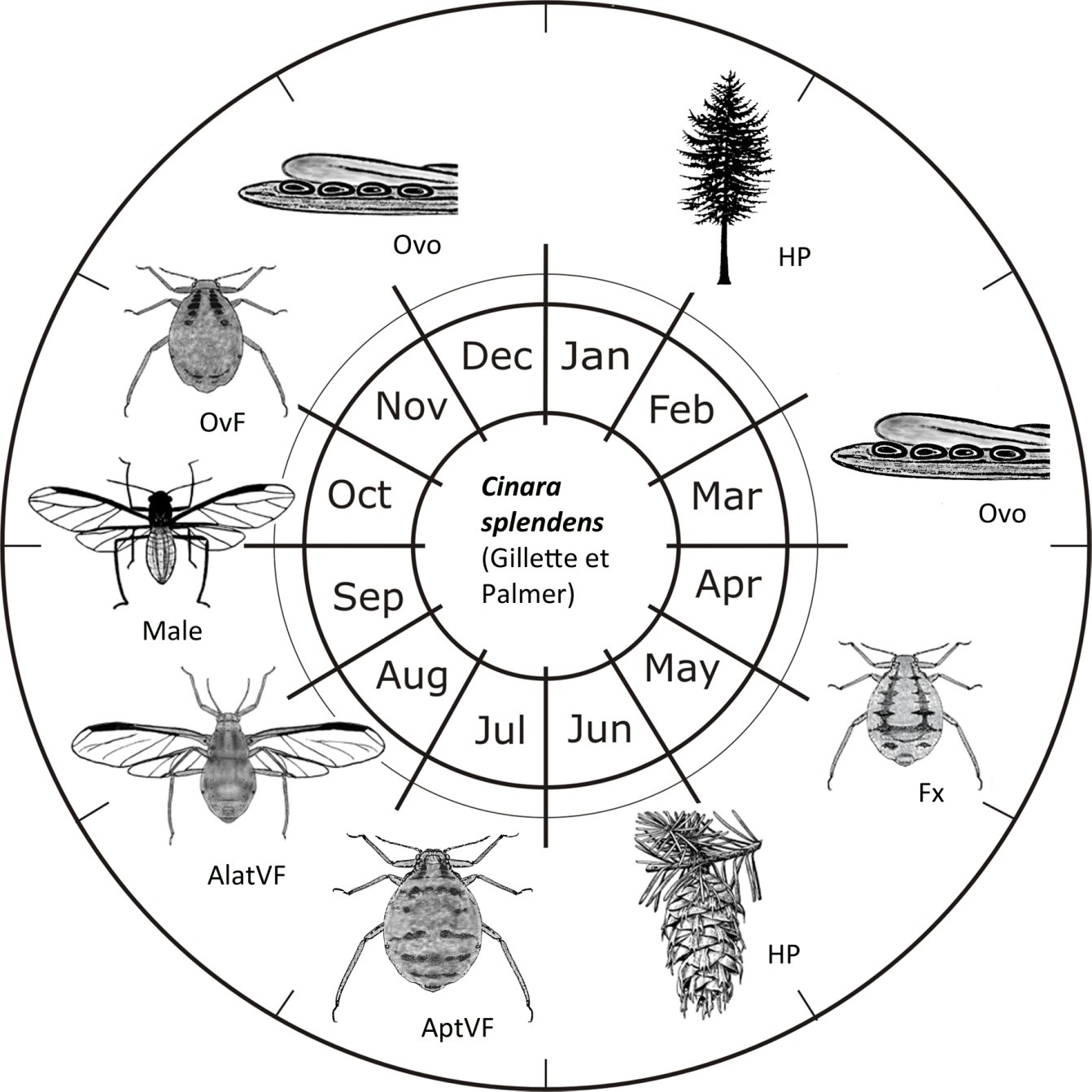
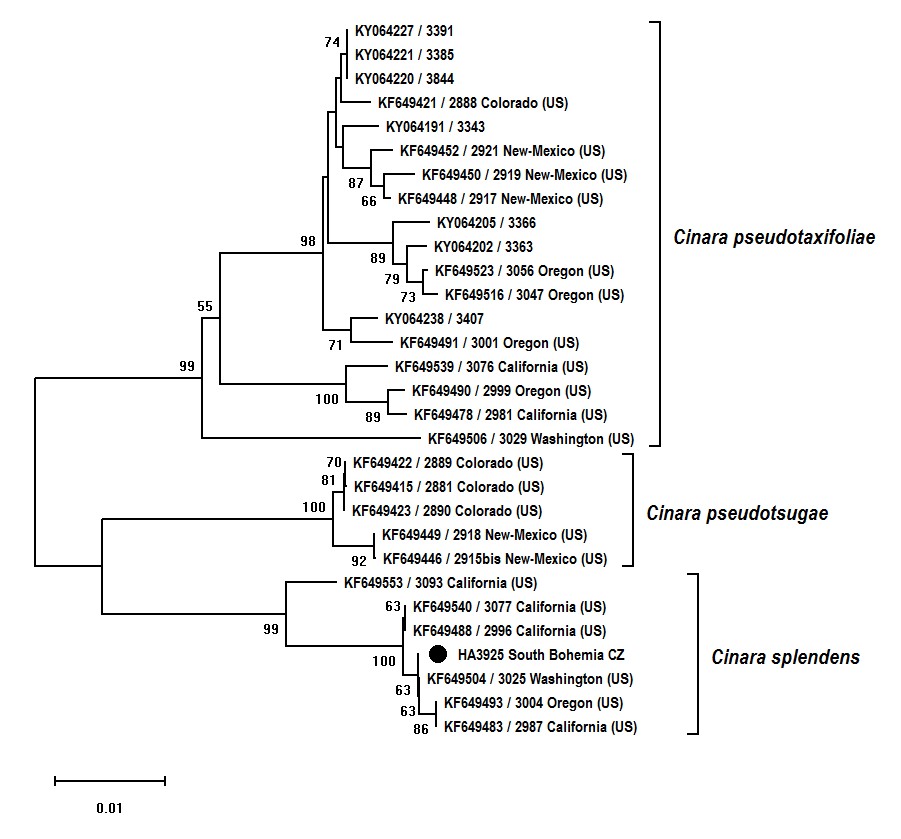
Cinara splendens (Gillette and Palmer, 1924) life-cycle in Central Europe. (HP = host plant; Fx = fundatrix; AptVF = apterous viviparous female; AlatVF = Alate viviparous female; OvF = ovipara).
Neighbour-joining tree (p-distances, 1000 bootstrap replications) based on COI fragment (658 bp) of species of the genus Cinara collected from Pseudotsuga spp. Bootstrap values over 50% are shown next to branches. The sample from the Czech Republic is marked with a black circle.
Lethal Doses of Saponins from Quillaja saponaria for Invasive Slug Arion vulgaris and Non-Target Organism Enchytraeus albidus (Olygochaeta: Enchytraeidae)
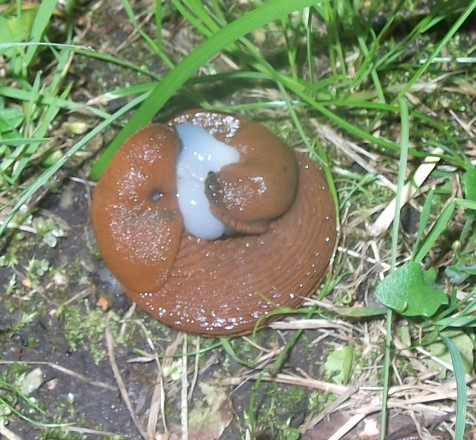
We evaluated the effect of saponins extracts from the bark of the soap tree, Quillaja saponaria, against invasive slugs (of diferent age groups) and non-target decomposters, the white worms, by measuring the concentrations of toxins that kill 50% of individuals in the sample. In addition, we aimed to evaluate the impact at different temperatures.
The results of our studies showed that Q. saponaria saponins may be a successful slug control tool used during the colder time of the year, but its concentration should be selected according to the age group of A. vulgaris. However, the unexpected toxicity to model organisms (white worms) limits its use as an environmentally benign alternative means of slug control.
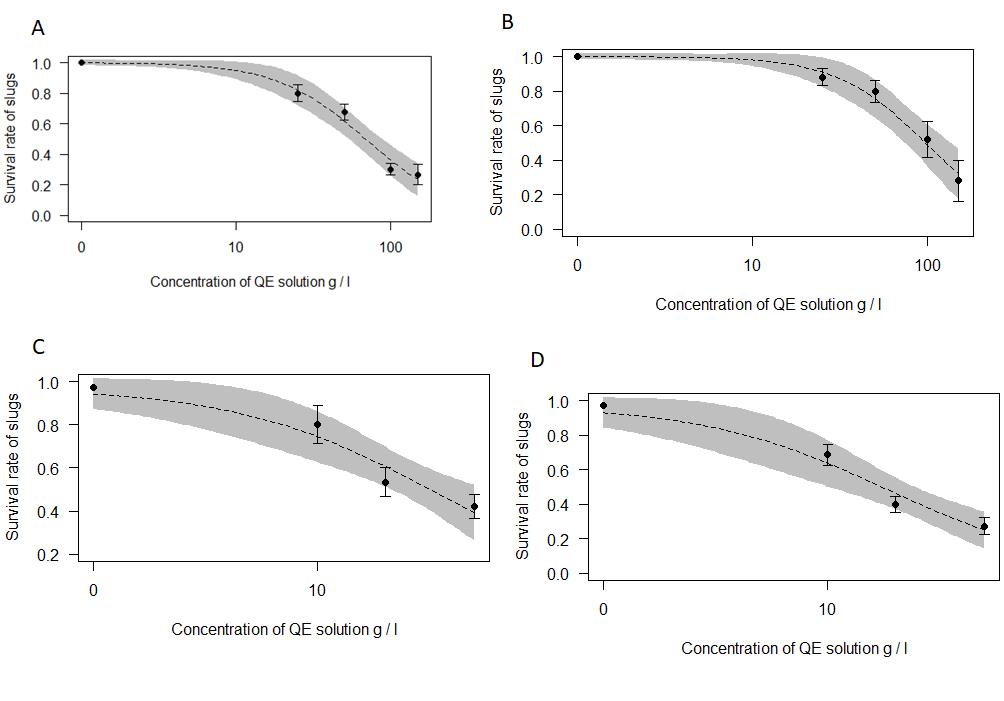
Dose–response curves for the toxicity of solution of Quillaja saponaria aqueous extract (QE) on: (A) A. vulgaris adults at 15°C; (B) A. vulgaris juveniles at 15°C; (C) A. vulgaris adults at 2°C; (D) A. vulgaris adults at 1°C. A grey band on the curve represents the standard error of the dose–response model. Black dots show the mean (with standard error bars) efect of the tested concentration of QE solution. Black dots represent tested concentrations of QE solution: 0; 25; 50; 100; 150 g/L (A and B) and 0; 10; 20; 50 g/L (C and D).
Interaction between the White-tailed Eagle (Haliaeetus albicilla) and Common Buzzard (Buteo buteo)
In the current study, we discovered the interaction between the largest avian predator White-tailed Eagle and mesopredator Common Buzzard, when top predator White-tailed Eagle may prey on mesopredators and their broods. The present study involved White-tailed Eagle diet analysis as well as the results of a field experiment conducted near the nests of Common Buzzards to test how they respond to the appearance of a top predator White-tailed Eagle (Kamarauskaite et al. 2020, https://www.ornisfennica.org/pdf/latest/19Kamarauskaite.pdf).
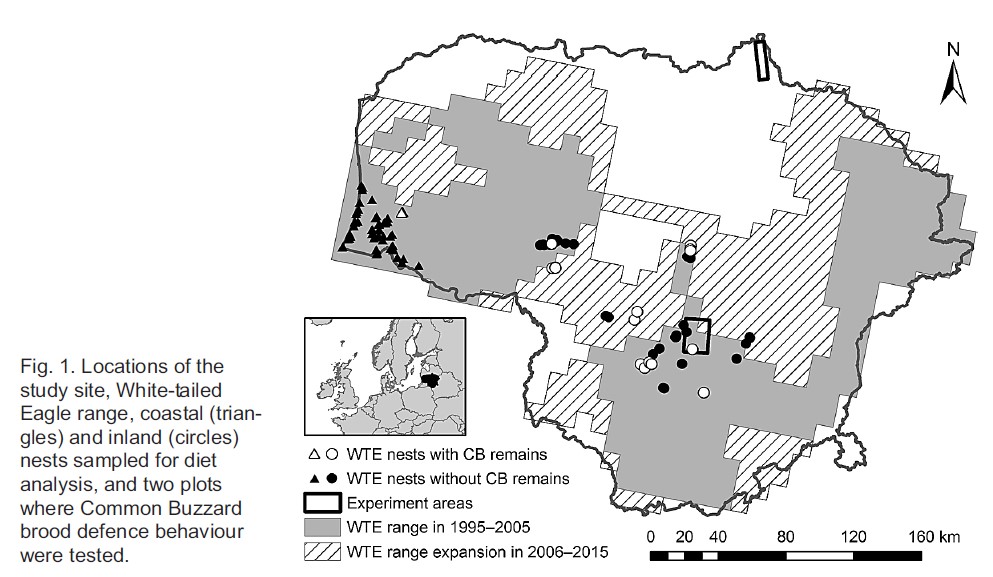
An experiment to test behavioural responses of nesting Common Buzzards towards White-tailed Eagles was performed during summer of 2018 in two plots located in Central and Northern Lithuania (Fig. 1.). The first plot was selected in Central Lithuanian forest, where White-tailed Eagles are common since 1995 and the second plot was selected in Northern Lithuania forest, where no breeding pairs of White-tailed Eagle have been found until 2018. Our results indicate that Common Buzzards responded to a White-tailed Eagle dummy placed near nest sites during only half of the observed visits. The response of Common Buzzards was not explained by their proximity to the breeding pairs of White-tailed Eagles. It depends on a stage of the breeding season of Common Buzzards, differences in defence behaviour and aggressiveness between pairs (Fig. 2.). However, the remains of nestling Common Buzzards as one of the results were found by us in 9% of successful White-tailed Eagles nests. These birds may prey upon the broods of Common Buzzards under certain environmental conditions; this source of prey could easily be accessed due to the weak brood defence behaviour by Common Buzzards.
